





The Surrealism Website
Dorothea Tanning (1910-2012)
 Dorothea Tanning came to New York in 1935 and worked as a commercial artist.
In 1936 she had gone to the Museum of Modern Art's massive exhibition, Fantastic Art, Dada and Surrealism and there seen works of Brauner, Dominguez, Ernst, Tanguy, Dali and many of the more minor figures. This inspired her to adopt a surrealist style. In 1942 she painted Birthday. That year gallery owner Julien Levy introduced her to Max Ernst who came to her studio and was profounded impressed by this painting. After his initial visit, Dorothea and Ernst played chess every day for a week. Then he moved in and after Ernst had divorced Peggy Guggenheim they married and relocated to Arizona before finally moving to France.
Dorothea Tanning came to New York in 1935 and worked as a commercial artist.
In 1936 she had gone to the Museum of Modern Art's massive exhibition, Fantastic Art, Dada and Surrealism and there seen works of Brauner, Dominguez, Ernst, Tanguy, Dali and many of the more minor figures. This inspired her to adopt a surrealist style. In 1942 she painted Birthday. That year gallery owner Julien Levy introduced her to Max Ernst who came to her studio and was profounded impressed by this painting. After his initial visit, Dorothea and Ernst played chess every day for a week. Then he moved in and after Ernst had divorced Peggy Guggenheim they married and relocated to Arizona before finally moving to France.
In 1943 she produced one of her now best known paintings Eine kleine Nachtmusik in which a child encounters an enormous dead sunflower in what appears to be a hotel corridor. Beside her, leaning against the door jamb, is another child or perhaps a life size female doll. Tanning wrote about this painting some years later "It's about confrontation. Everyone believes he/she is his/her drama. While they don't always have giant sunflowers (most aggressive of flowers) to contend with, there are always stairways, hallways, even very private theatres where the suffocations and the finalities are being played out..."
She had explored similar imagery a year earlier in her Childrens games. Again these figures are depicted in a long corridor with a distant source of light.
In 1944 she created the painting Endgame in which a female shoe stamps upon a bishop's mitre with such force that it distorts and almost pushes through the chessboard.
Her paintings throughout the 1940's are powerful and self-assured. Her 1944 self portrait in which she shows herself standing, clothed only in a nightdress, before the majestic powerful landscape of Arizona's mesas. She does not appear to be overwhelmed by this but instead stands confidently gazing and taking in the scene. She wrote about this some time later "In that camera-sharp place where planetary upheaval had left its signature: the now placid monuments that, as far as anyone out there cared, had been there forever, I would undertake - "dare" would be a truer word - to paint the unpaintable."
She continued to pour out major pieces often shifting styles with such as the 1945 Truth about comets, Avatar of 1947 with a young woman with long hair flying on a trapeze in the upper part of her bedroom, which is shown in false perspective and of course, Max in a Blue Boat of the same year, with his signature loplop bird figure on the white sail. The enigmatic On time Off Time is yet again is a different style.
In Interior with sudden Joy of 1951 she shows two rather dissolute young women in front of a blackboard which Tanning reveals as having some phrases from verses of Arthur Rimbaud.
One girl is petting a large dog (probably based on Tanning's and Ernst's dog Katchina) while the other girl, having dropped a cigarette, gazes at a strange tableau where a black man is embracing a tree like form wrapped in white cloth. From a door at the back right a woman is about to intrude on these events.
A painting from 1954 Family portrait presents a nuclear family in which each person is displayed in scale. The mother is only marginally larger than the dog, while the daughter sitting at the kitchen table is twice her size, and the father dominates over the whole scene so much that we only see him from his chest to forehead.
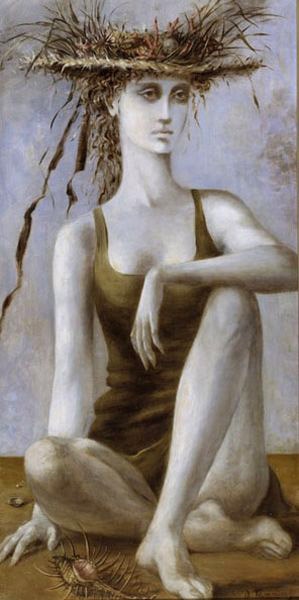
.jpg)
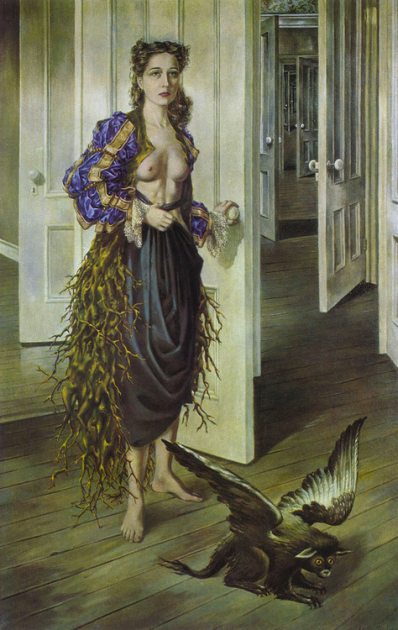
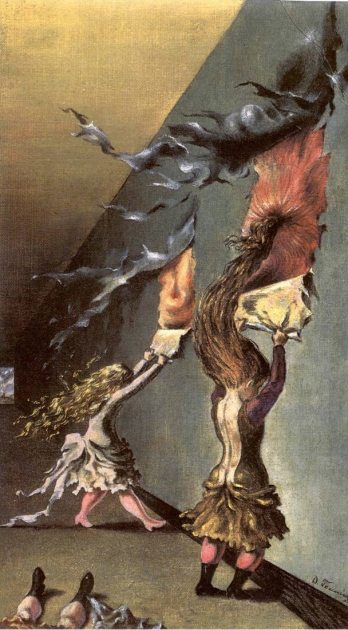
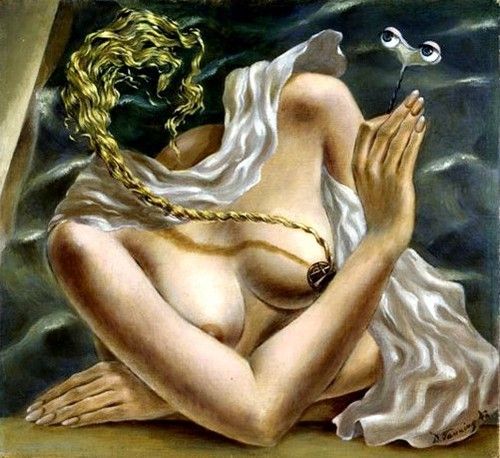
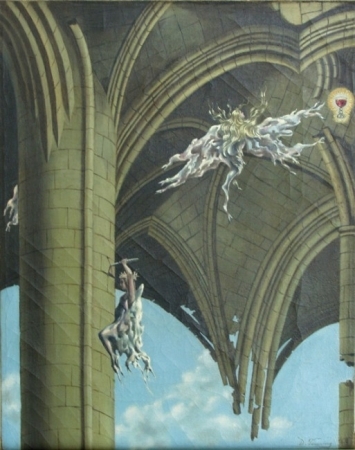
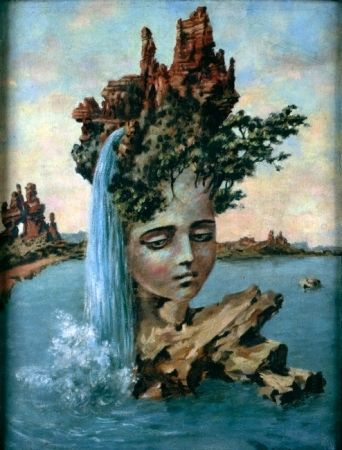
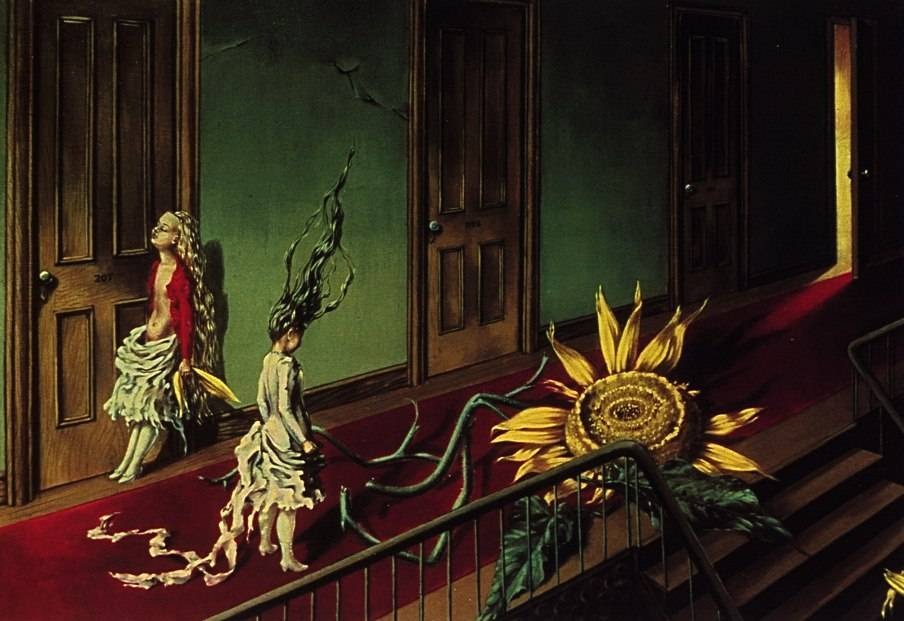
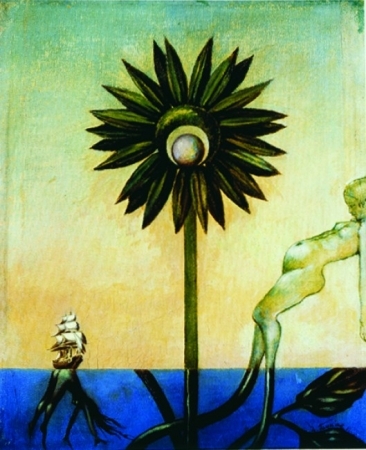
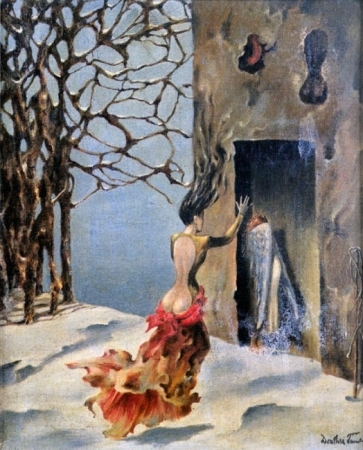
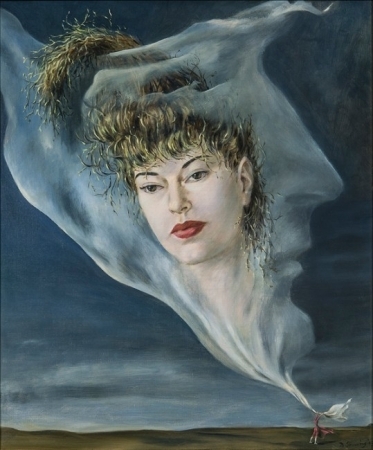
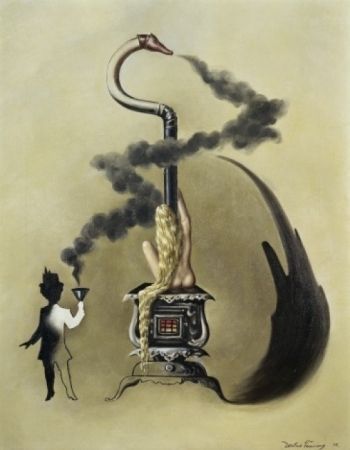
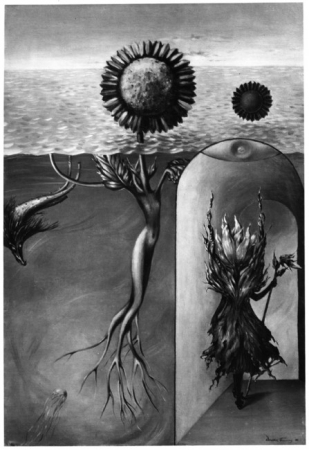
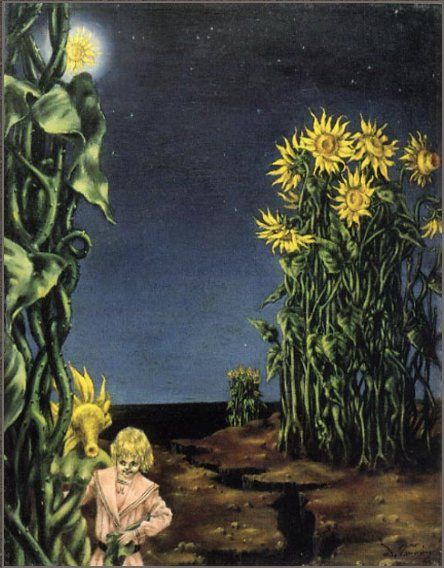
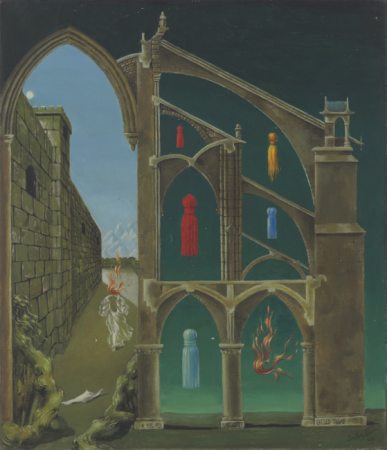
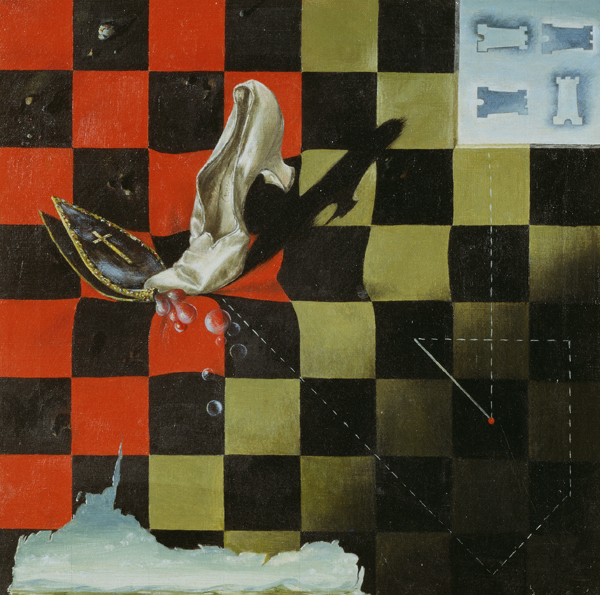
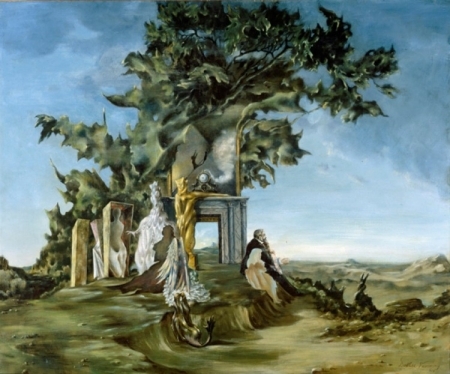
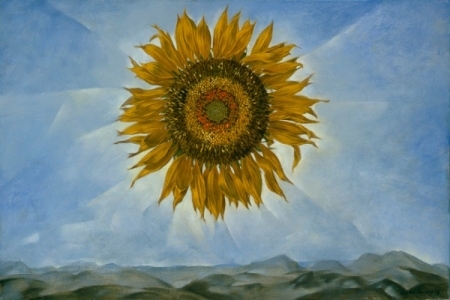
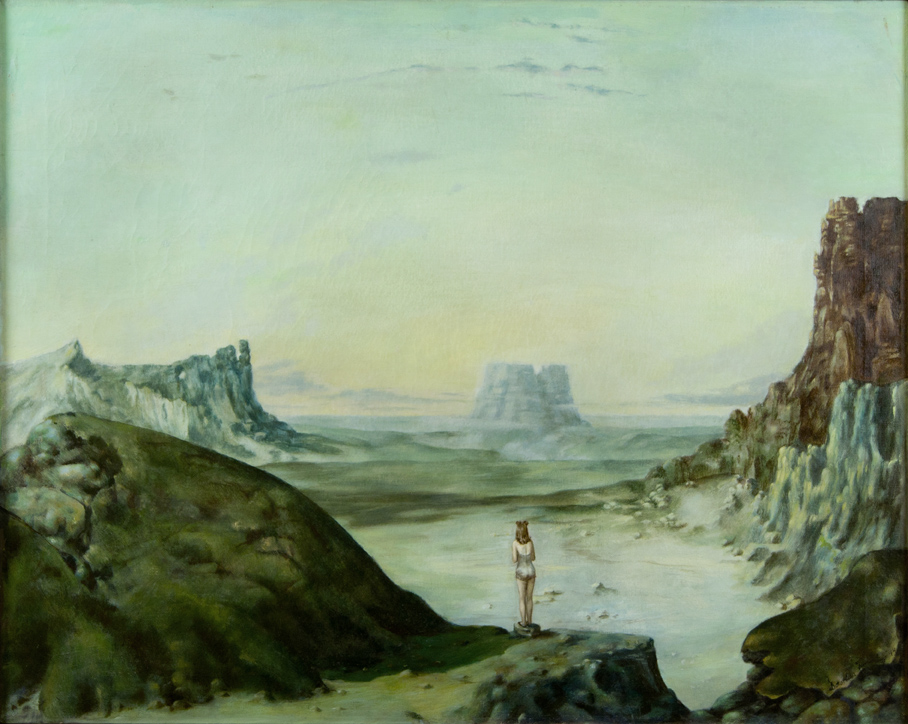

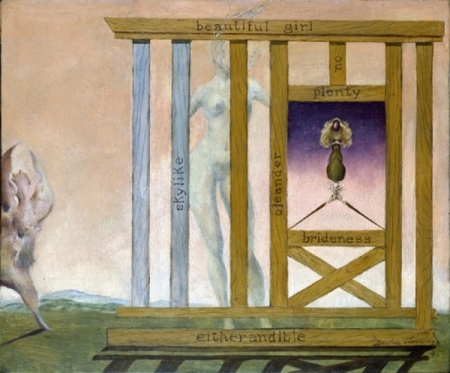
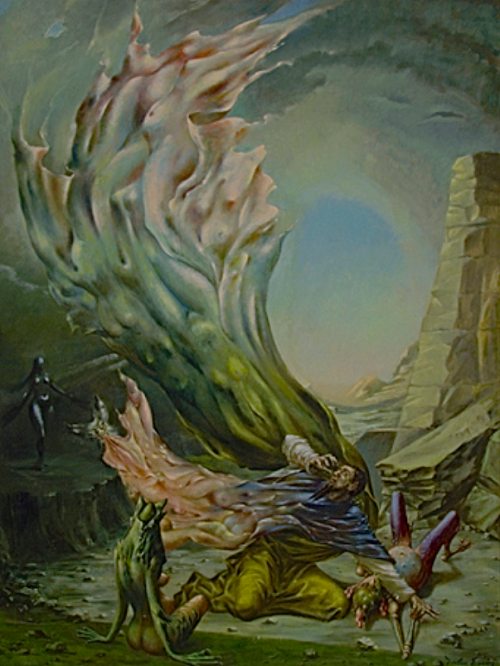
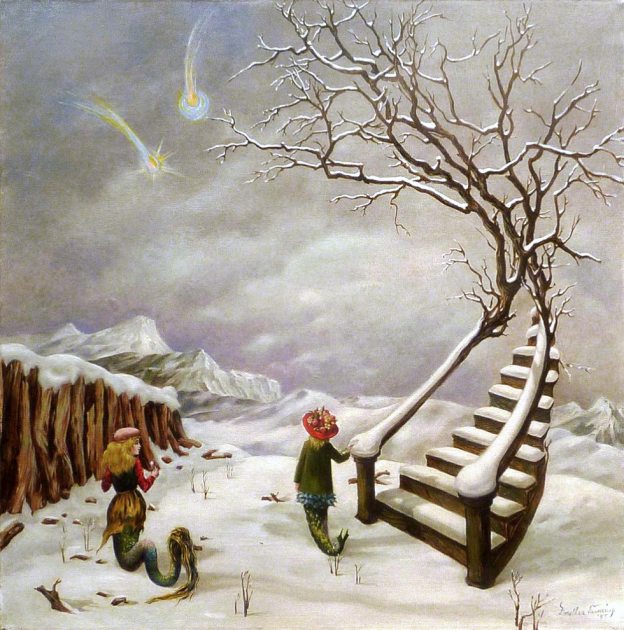
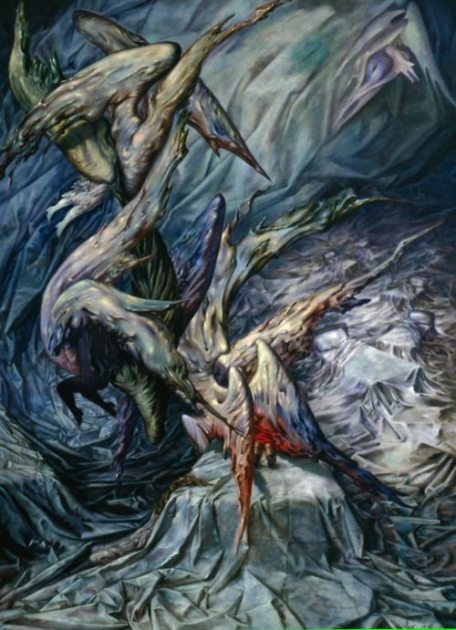
.jpg)
.jpg)
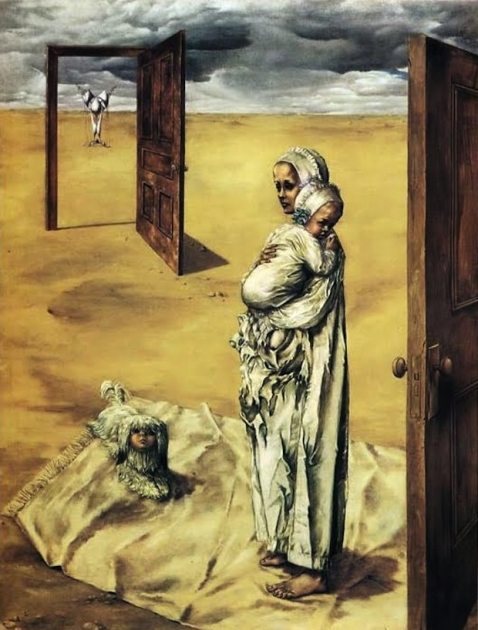
.jpg)
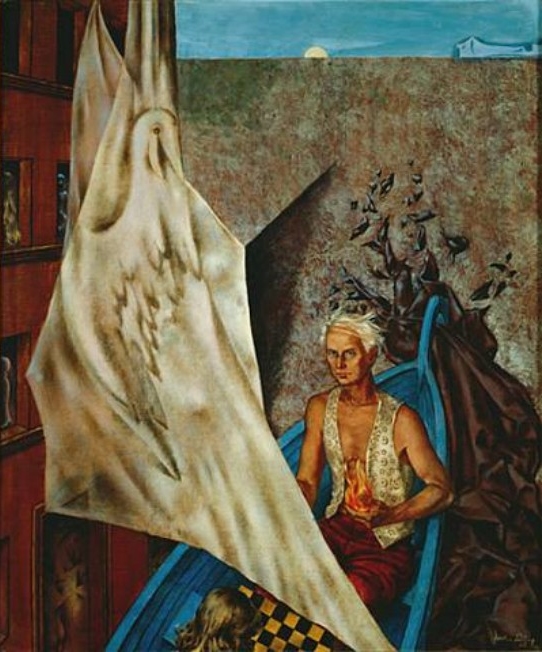
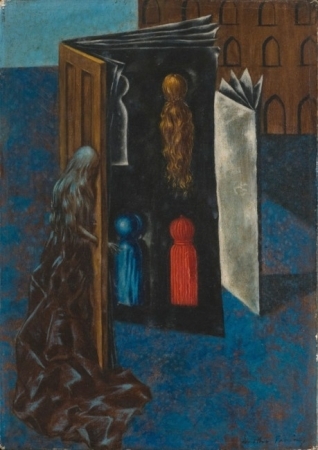
.jpg)
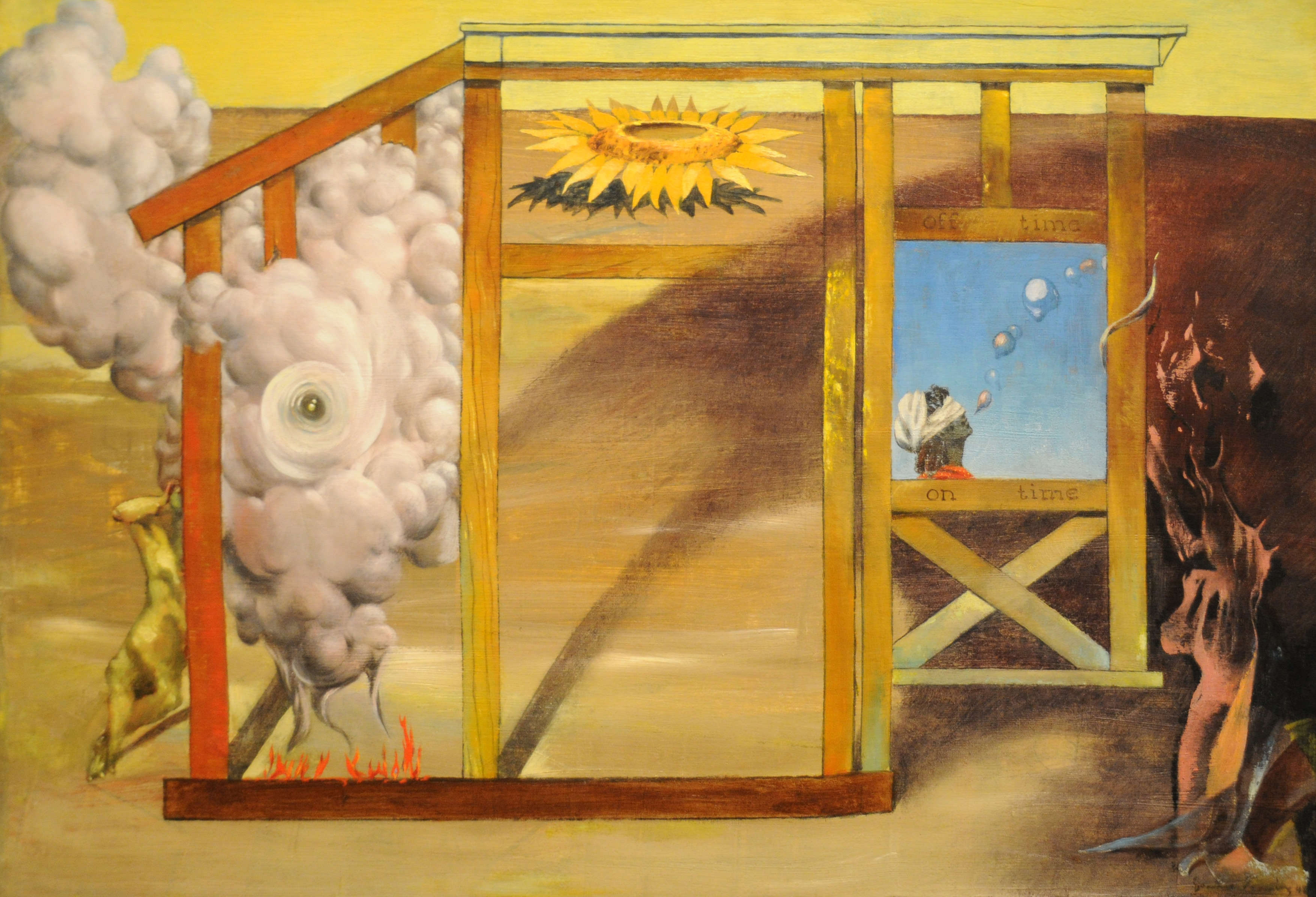

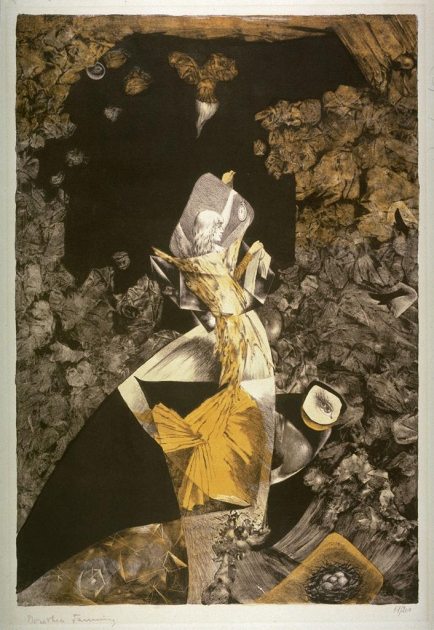
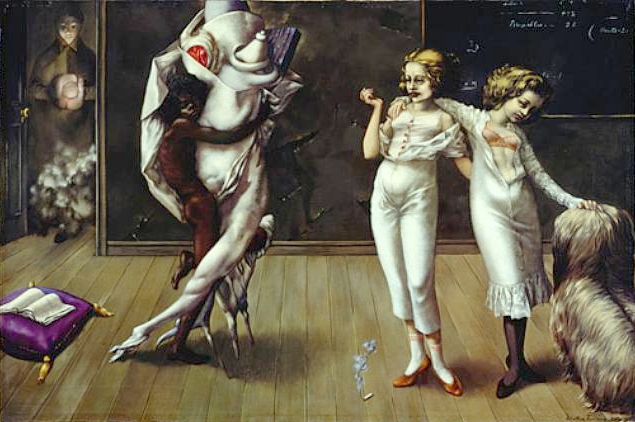

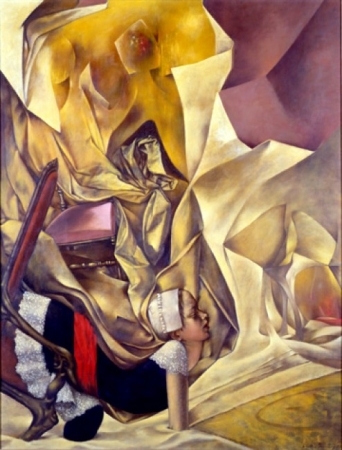
.jpg)
.jpg)
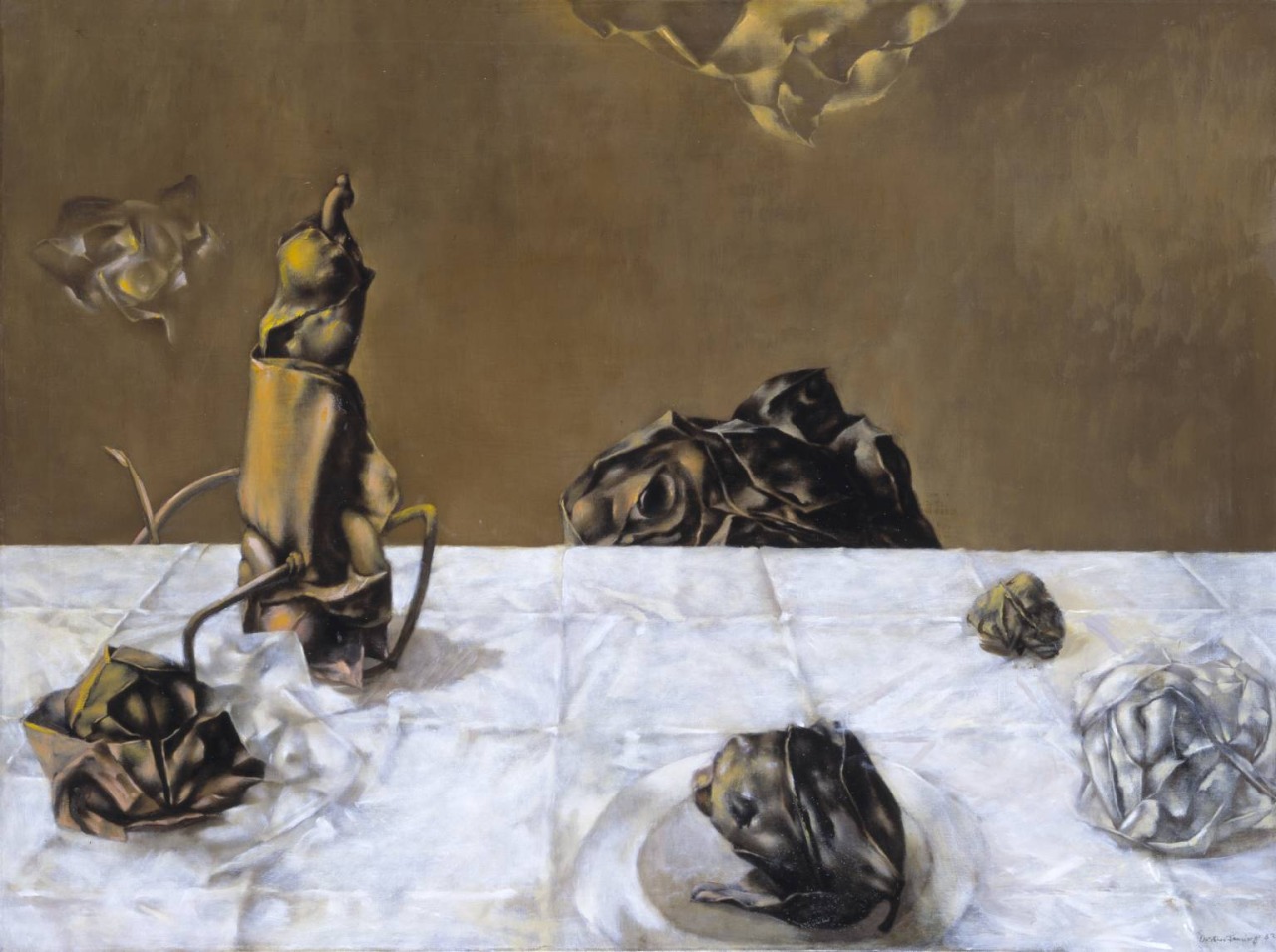
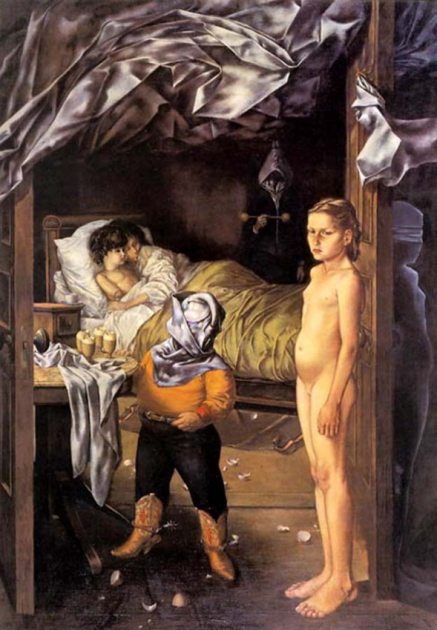
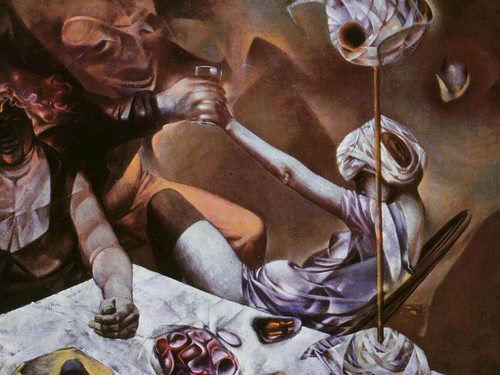
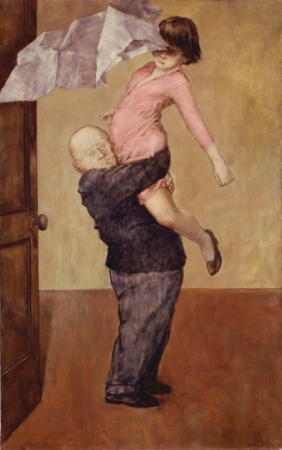
.jpg)
.jpg)
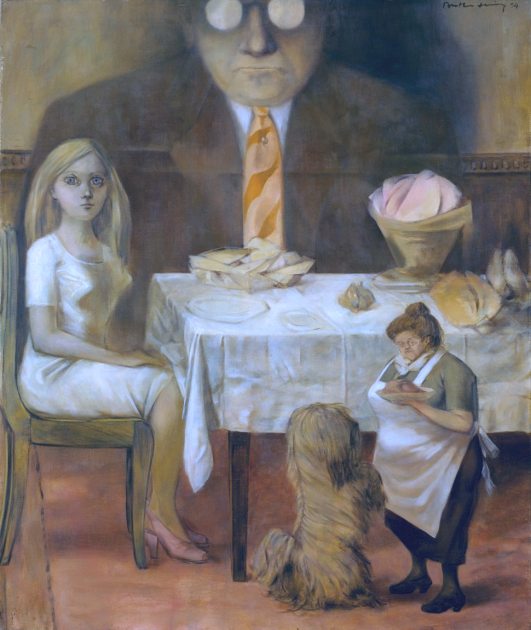
.jpg)
.jpg)
.jpg)
.jpg)
.jpg)
.jpg)
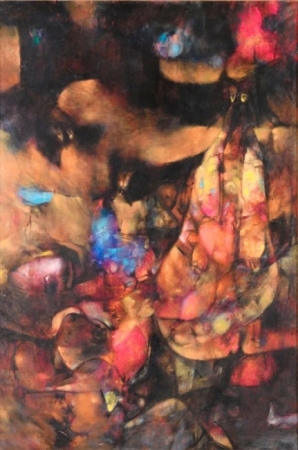
.jpg)
.jpg)
.jpg)
.jpg)
.jpg)
.jpg)
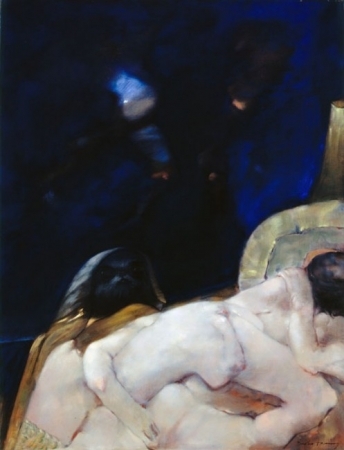
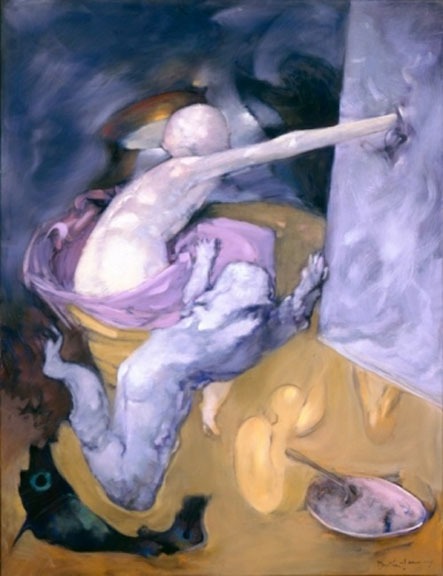
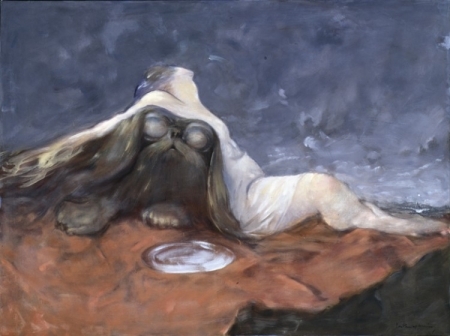
.jpg)
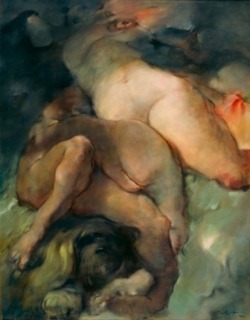
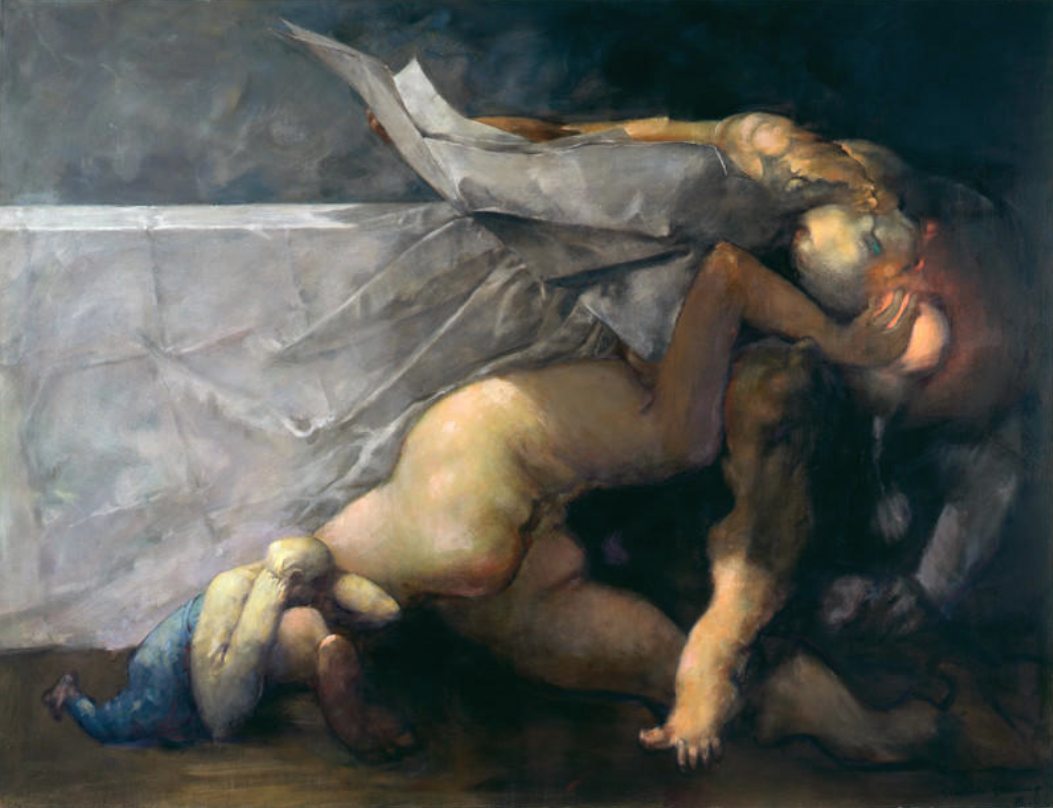
.jpg)
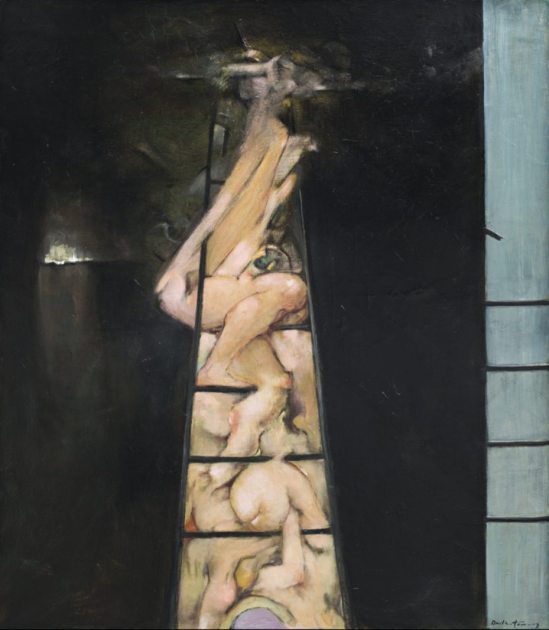
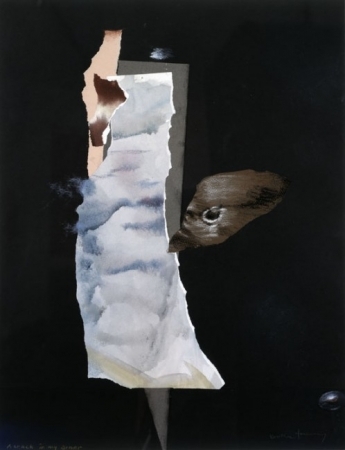
.jpg)







.jpg)






















.jpg)
.jpg)

.jpg)


.jpg)






.jpg)
.jpg)




.jpg)
.jpg)

.jpg)
.jpg)
.jpg)
.jpg)
.jpg)
.jpg)

.jpg)
.jpg)
.jpg)
.jpg)
.jpg)
.jpg)



.jpg)


.jpg)


.jpg)
 Dorothea Tanning came to New York in 1935 and worked as a commercial artist.
In 1936 she had gone to the Museum of Modern Art's massive exhibition, Fantastic Art, Dada and Surrealism and there seen works of Brauner, Dominguez, Ernst, Tanguy, Dali and many of the more minor figures. This inspired her to adopt a surrealist style. In 1942 she painted Birthday. That year gallery owner Julien Levy introduced her to Max Ernst who came to her studio and was profounded impressed by this painting. After his initial visit, Dorothea and Ernst played chess every day for a week. Then he moved in and after Ernst had divorced Peggy Guggenheim they married and relocated to Arizona before finally moving to France.
Dorothea Tanning came to New York in 1935 and worked as a commercial artist.
In 1936 she had gone to the Museum of Modern Art's massive exhibition, Fantastic Art, Dada and Surrealism and there seen works of Brauner, Dominguez, Ernst, Tanguy, Dali and many of the more minor figures. This inspired her to adopt a surrealist style. In 1942 she painted Birthday. That year gallery owner Julien Levy introduced her to Max Ernst who came to her studio and was profounded impressed by this painting. After his initial visit, Dorothea and Ernst played chess every day for a week. Then he moved in and after Ernst had divorced Peggy Guggenheim they married and relocated to Arizona before finally moving to France.